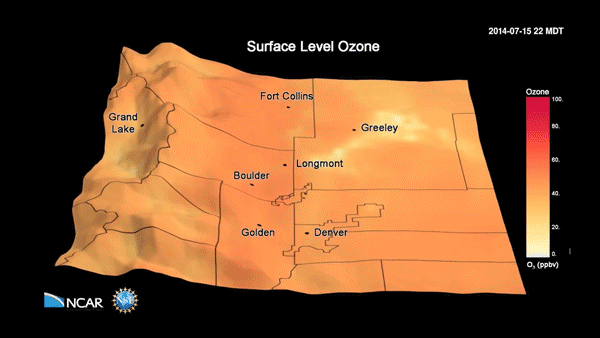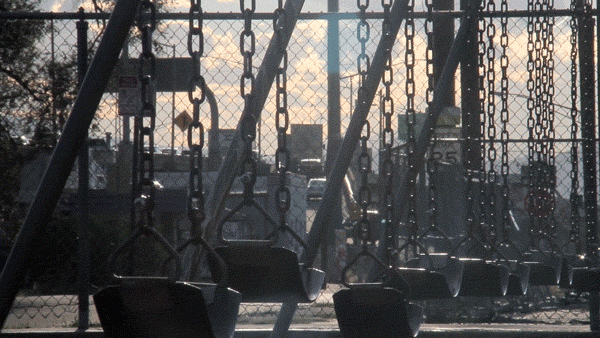
There's a lot of ozone floating over the Front Range. Denver, your love for automobiles is a major contributor. This month scientists at the Boulder-based National Center for Atmospheric Research published findings that they say "pinpoint" sources of the greenhouse gas across the region.
Their report points to emissions from cars and oil and gas projects as the two biggest local sources of ozone. Experts say if we can tame our propensity to drive in cars by ourselves, we'll deal with both sources by reducing the emissions we create and lowering demand for oil and gas production in the first place. Many, many of those polluting cars are anchored in the Denver metro area.
Is it bad?
Gabriele Pfister and Frank Flocke, principal investigators on the study, took some time to put this in context.
Put simply, said Pfister: “We are not in clean healthy air. We do have a pollution problem.”
While there's always a fairly unhealthy base-level of ozone in the Northern Hemisphere -- caused by the entire globe's worth of polluters -- Pfister and Flocke's data shows that we are making the problem much worse for ourselves locally. The problem is bad enough that Denver, Adams, Boulder, Broomfield, Douglas, Jefferson and parts of Larimer and Weld counties are all in violation of national standards for ozone levels because levels peak too often. The worst peaks occur in the summer.
Pfister and Flocke's mapping shows that ozone pollution from oil and gas production near Fort Collins and industry in Commerce City is floating into Denver as well. Meanwhile, the metro area is producing roughly as much pollution from our cars.
Why is this bad?
Chronic exposure to high levels of ozone can result in respiratory and cardiovascular issues. It's concerning enough that the EPA lowered the acceptable threshold in 2015.
It's even more of an issue when you look at ozone pollution in context with other environmental health conversations going on in Denver right now. This year, Globeville was listed as having some of the worst air quality in the country. Concerns about particulate matter pollution have persisted around the I-70 corridor for years and motivated activists fighting future projects.

The whole region has an ozone problem, but Denverites have a lot of power to deal with it.
For Flocke, the region's issues could be managed if Denverites figured out how to be more efficient on the road. He said he'd like to see better public transportation and less single-occupancy cars on the roads. While he thinks America in general has sprawling urban layouts that make this even harder, he says he's hopeful something could be done if we have the willpower to do so.
"If everyone says, 'The little bit that I make doesn’t make a difference,'" he said, "we’re not going anywhere."
But, if everyone could take the bus, carpool, ride a bike, that could add up to a lot. And then the other main source of ozone might become less of a problem too.
This would be a good-neighbor-kind-of-thing to do. You can see from the team's mapping that ozone created across the region often swirls together and blankets the region, what Flocke calls a "potent mix." And it has a tendency to flow west into Golden and up into foothills communities that contribute less to ozone pollution in the first place.
You can see extended animated mapping of Front Range Ozone on Youtube.












